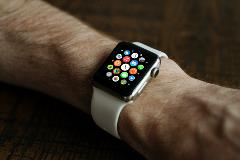 Tens of millions of people have bought into the fitness trend, wearing a Fitbit or similar wearable technology device to track their every move. With the increase of fitness trackers entering the marketplace comes the increasing production of personalized data. Fitness trackers, smart watches, heart-rate monitors, GPS trackers and other wearable devices gather and store large amounts of potentially crucial information. Depending on an attorney’s creativity and diligence, this information can be used as evidence to investigate a claim.
Tens of millions of people have bought into the fitness trend, wearing a Fitbit or similar wearable technology device to track their every move. With the increase of fitness trackers entering the marketplace comes the increasing production of personalized data. Fitness trackers, smart watches, heart-rate monitors, GPS trackers and other wearable devices gather and store large amounts of potentially crucial information. Depending on an attorney’s creativity and diligence, this information can be used as evidence to investigate a claim.
New Types of Evidence and How it Can be Used
As with any introduction of new technology, there is an increasing amount of available data that can be used as evidence within a claim. But you might be asking yourself "How can this information be used as evidence in court?" The quantifiable data provided by fitness trackers is poised to provide claims professionals and defense attorneys with a new tool in handling claims.
Imagine yourself in a personal injury case. The plaintiff is arguing how certain activity levels have dropped since they have become injured. As a defense attorney, you can use the information gathered from a device to prove that the plaintiff is indeed functioning quite well based on their fitness activity or other mental health data.
What about worker’s compensation claims in the workplace? In Laushway v. Messervey, the plaintiff led an internet-based business from his home and after suffering injuries, claimed he was no longer capable of sitting at this computer for extended periods of time. As a defense litigator, you can request to view the metadata contained in one of the devices. This data holds key data that could be deemed relevant, accurate, and reliable to refuting the plaintiff’s case.
Tricks to Obtaining the Data and Its Authentication
Your method of obtaining the data will depend on the type of claim, the issue, and the setting. If no lawsuit has been filed, questions about wearable devices and their data can be included in your investigation. However, if litigation has begun, a discovery request must be made to determine if any wearable was present, followed by other requests to obtain data. Obtaining this type of evidence should be no different than other e-discovery, such as email and social media content.
As with all electronic evidence, questions about its legitimacy, authenticity, and accuracy must be answered. Much like photos and videos, wearable data is has been simultaneously recorded word for word. Another plus for the defendant is it was gathered by the claimant, who will have problems denying its legitimacy.
As the number of people using wearables to track their personal data increases, the number of sources for information prior to and during litigation and trial continues to grow. In the right case, information collected from a wearable device can have a game-changing impact on a trial.